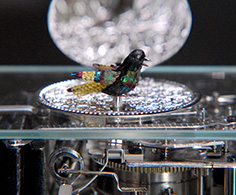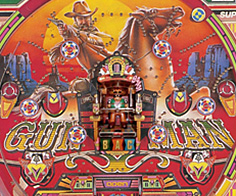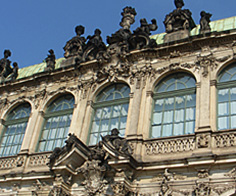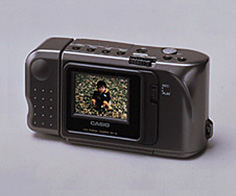The ANODOS “vessel” contains reflections of the many people and objects which have influenced me, and my ideal vision for our services. These influences may be evident in the products we work on in the future. I always feel that taking a step towards the future is the same as going back in time to return to my source of inspiration.
-
- The artful fusion between hard and soft
 Inspired by the mechanical singing bird (1780s). These wind-up analog gadgets hold primitive, mechanical programs. Operating them makes a bird appear, and produces a sound that emulates an actual bird’s song. The well-known creator of these objects was Pierre Jaquet-Droz (1721-1790). His three famous automata caused a great sensation across Europe. The skilful fusion he achieved between hardware and software, with an added element of art, makes the singing bird one of the gadgets which has inspired me the most.
Inspired by the mechanical singing bird (1780s). These wind-up analog gadgets hold primitive, mechanical programs. Operating them makes a bird appear, and produces a sound that emulates an actual bird’s song. The well-known creator of these objects was Pierre Jaquet-Droz (1721-1790). His three famous automata caused a great sensation across Europe. The skilful fusion he achieved between hardware and software, with an added element of art, makes the singing bird one of the gadgets which has inspired me the most.
-
- Attractive ideas
 Inspired by Nikola Tesla (1856-1943). One of Thomas Edison’s rivals, Tesla developed the alternating current (AC) electrical supply system, and is also known as the namesake for the unit of measurement for magnetic flux density. He was an incredible inventor with numerous achievements, but also came up with many attractive ideas that impressed the public. Using the Tesla coil (1897) he developed through adapting the principles of resonance, he created lightning, which is used for visual effects. He also offered ideas for remote-controlled robots (1898), which are currently in the spotlight today.
Inspired by Nikola Tesla (1856-1943). One of Thomas Edison’s rivals, Tesla developed the alternating current (AC) electrical supply system, and is also known as the namesake for the unit of measurement for magnetic flux density. He was an incredible inventor with numerous achievements, but also came up with many attractive ideas that impressed the public. Using the Tesla coil (1897) he developed through adapting the principles of resonance, he created lightning, which is used for visual effects. He also offered ideas for remote-controlled robots (1898), which are currently in the spotlight today.
-
- The intrigue of chance
 nspired by the Nishijin pachinko machine “Wyatt Earp, Sherriff of the West” (1987). This pachinko machine achieved great levels of popularity in Japan in the late 80s. Making a win on this machine required an unusual move, making winning seem interestingly “accidental.” At a glance, the machine appeared to be made to just receive balls randomly dropped in, but its actually complicated makeup was the source of its popularity. Despite not having a modern LCD digital display, it is an example of a successful entertainment service which combined hardware and software in a sophisticated way. It was a gadget which logically displayed the concept of “unpredictability as the key to entertainment.
nspired by the Nishijin pachinko machine “Wyatt Earp, Sherriff of the West” (1987). This pachinko machine achieved great levels of popularity in Japan in the late 80s. Making a win on this machine required an unusual move, making winning seem interestingly “accidental.” At a glance, the machine appeared to be made to just receive balls randomly dropped in, but its actually complicated makeup was the source of its popularity. Despite not having a modern LCD digital display, it is an example of a successful entertainment service which combined hardware and software in a sophisticated way. It was a gadget which logically displayed the concept of “unpredictability as the key to entertainment.
-
- The beauty of form
 Inspired by the “Dresden Mathematics and Physics Salon” (1728). This museum exhibits precision instruments from as early as the 16th century, displaying clocks, mechanical adding machines, celestial globes, pedometers, precision automata, and other items. There are very few museums as attractive as this one for learning about the wonders of precision instruments. Along with Zwinger Palace, the architectural formations of the buildings themselves are also very impressive. At the time of its construction, Baroque architecture was flourishing in Dresden, and the basis for many masterpieces. The Dresden Mathematics and Physics Salon is one of the most magnificent of all.
Inspired by the “Dresden Mathematics and Physics Salon” (1728). This museum exhibits precision instruments from as early as the 16th century, displaying clocks, mechanical adding machines, celestial globes, pedometers, precision automata, and other items. There are very few museums as attractive as this one for learning about the wonders of precision instruments. Along with Zwinger Palace, the architectural formations of the buildings themselves are also very impressive. At the time of its construction, Baroque architecture was flourishing in Dresden, and the basis for many masterpieces. The Dresden Mathematics and Physics Salon is one of the most magnificent of all.
-
- New genre discoverers
 Inspired by the “Casio QV-10” (1994). This was the most successful digital gadget in recent years, and was responsible for bringing digital cameras from their “toy” category into the realm of photography. Its hardware was simple, but the fact that it was recognized as a tool for online communication is very interesting. Japanese-made digital cameras, including the QV-10, not only uncover new genres, they also show that Japan’s manufacturing strength for fusing advanced functions is alive and well.
Inspired by the “Casio QV-10” (1994). This was the most successful digital gadget in recent years, and was responsible for bringing digital cameras from their “toy” category into the realm of photography. Its hardware was simple, but the fact that it was recognized as a tool for online communication is very interesting. Japanese-made digital cameras, including the QV-10, not only uncover new genres, they also show that Japan’s manufacturing strength for fusing advanced functions is alive and well.